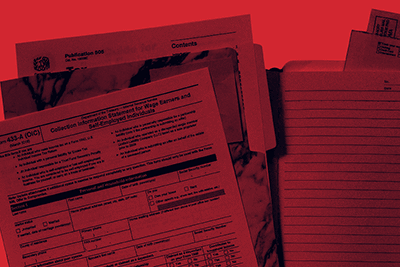Tax
Modifications to Loss Reserve Discounting Rules for Insurance Companies
Hot take reading time: 30 seconds
Article reading time: 2 minutes 30 seconds
Hot Take:

The revised loss reserve discounting rules are expected to affect both current and deferred taxes for P&C insurance companies. With the higher applicable interest rate used to determine loss reserve discount factors and the extended payment period for recovering loss reserves, insurers should expect to see their tax basis discounted loss reserve decrease. This will, in turn, result in increased taxable income and loss reserve DTA amounts. The increase in the DTA will be offset with a like increase in the DTL for the transition adjustment.
Full Article
The Tax Cuts and Jobs Act (TCJA) resulted in sweeping changes to the U.S. income tax rules. One of the more significant changes affecting non-life insurance companies is related to the modification of the loss reserve discounting (LRD) rules under Section 846. These modifications include:
- Changes to the calculation of discount factors by using the corporate bond yield curve rather than the applicable federal mid-term rate in determining the annual rate. The annual rate for 2017 under pre-TCJA rules was 1.46 percent compared to the 2018 annual rate of 3.12 percent. The move to the corporate bond yield curve is intended to more closely match the investment in bonds that are used to fund the undiscounted losses.
- Changes to the computational rules of loss payment patterns for long-tailed lines of business to extend the ten-year payment period and help smooth out negative payment patterns.
- The repeal of the option to use company historical loss payment patterns under former Section 846(e).
The IRS published proposed regulations under Section 846 and Revenue Procedure 2019-06 to provide guidance to taxpayers with respect to the revised loss reserve discounting rules.
Implementing the Revised Rules
Under the transitional rule of the TCJA for the application of the revised LRD rules in the first taxable year beginning after December 31, 2017, the amount of the unpaid losses and expenses at the end of the preceding year (2017) are to be recomputed under the revised rules of Section 846. The resulting “transition adjustment” is taken into account on a straight-line basis over eight years beginning with 2018.
Section 4 of Revenue Procedure 2019-06 sets forth the discount factors to be used to compute discounted unpaid losses under the revised rules of Section 846. Tables 1 and 2 present the factors for discounting unpaid losses and expenses for the first taxable year beginning after December 31, 2017. Tables 3 and 4 present the factors for discounting unpaid losses for the taxable year preceding the taxable year beginning after December 31, 2017, for purposes of calculating the transition adjustment. Tables 5 and 6 are to be used to compute discounted unpaid losses for accident year 2018 and subsequent years. Note that the same discount factors are to be used for computing discounted estimated salvage recoverable under Section 832. All of the discount factors presented in these tables are determined by using the applicable interest rate for 2018 of 3.12 percent.
For a calendar year P&C insurance company, the factors in Tables 1 and 2 will be used to discount the unpaid losses and expenses as of December 31, 2018; and the factors in Tables 3 and 4 will be used to recompute the discounted unpaid losses and expenses as of December 31, 2017. The transitional adjustment to be spread over eight years will be calculated as the difference between the December 31, 2017, unpaid losses and expenses per the 2017 tax return and the December 31, 2017, unpaid losses and expenses discounted under Tables 3 and 4 of Rev. Proc. 2019-06.
The transition adjustment is expected to affect both current and deferred taxes. With respect to current taxes, one-eighth of the transition adjustment will be reflected as an addition to taxable income. Similarly, the deferred inventory will reflect a new deferred tax liability (DTL) with an ending balance equal to seven-eighths of the transition adjustment.
In general, the revised LRD rules are expected to lower the amount of tax basis discounted unpaid loss reserves, which will, in turn, increase the associated deferred tax asset (DTA) and current taxable income for 2018.
